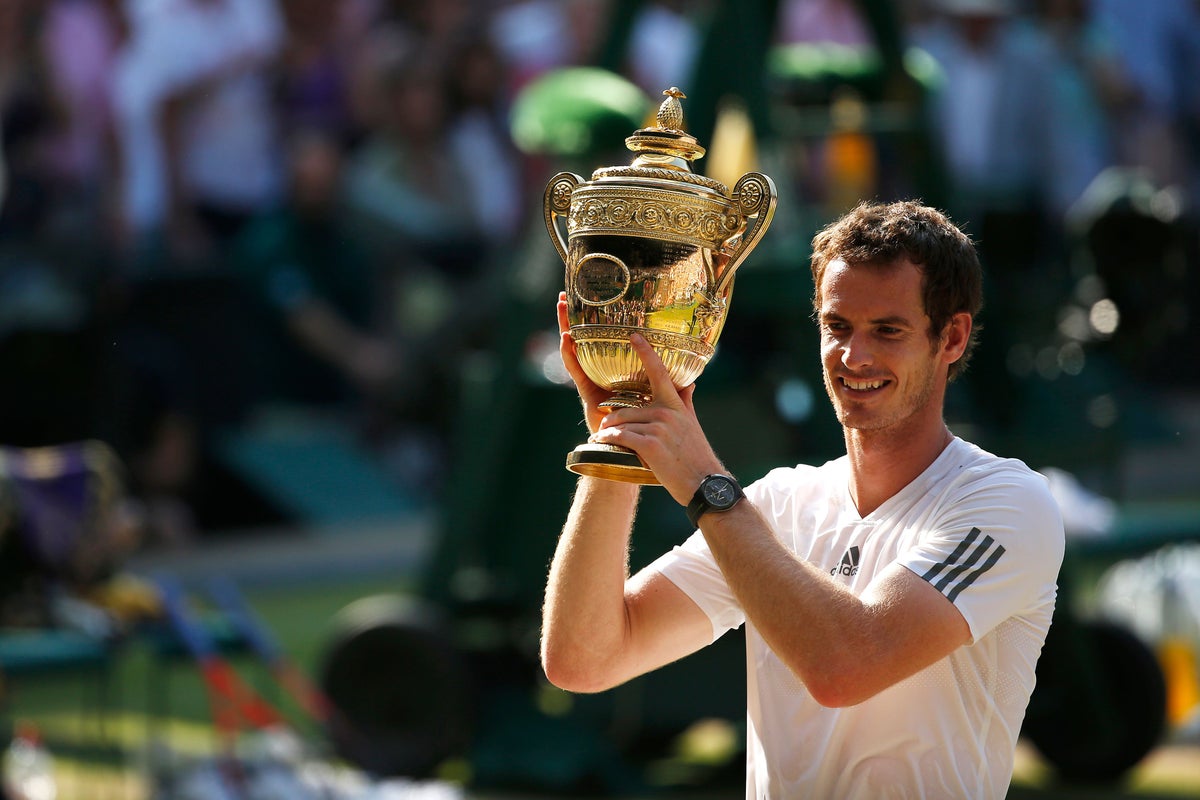
Support truly
independent journalism
In his final days as a professional tennis player, Andy Murray developed a new obsession. Keen to soak in every moment he could as he arrived at his fifth Olympics in Paris and last ever tennis tournament, Murray set out with the objective of gathering the largest collection of Olympic pins within Team GB, taking the opportunity to trade with as many athletes with different nations as he could to build the largest set.
Murray, it turns out, was pretty good at it, although it helps when you carry such fame around the Olympic village. Within days, he managed to boast the largest pin collection out of Team GB’s 327 athletes in Paris, lending a favour from gymnast Becky Downie to gather one of the most coveted, that of Simone Biles. Murray, though, was not satisfied until he had found one of the rarest of country pins. He set himself the goal of tracking down Liechtenstein, searching the village high and low until he eventually located the country’s sole athlete in Paris, a mountain biker named Romano Puetener. When Murray returned to his teammates with the Liechtenstein pin in hand, he celebrated as if he was grasping a gold medal.
Right up until the final moments of his career, Murray’s competitive streak remained as strong as ever, burning the same for a game of cards in the Olympic village as it was when he took to the Roland Garros clay. Incredibly, his final tournament produce a week to encapsulate a lifetime given to his sport. Murray and doubles partner Dan Evans saved five match points in their opening tie . Then, two days later, they produced another escape act. Where others would have seen the end, Murray refused to go down and accept the path that laid ahead of him.
The final defeat to Taylor Fritz and Tommy Paul was bruising, but it could have happened five days earlier. Instead, Murray rewrote his last chapter. As the curtain finally now falls, following defeat in the quarter-finals, there could not have been a more fitting way to mark it than at these Olympics. When Murray was asked afterwards how he would like to he remembered, he replied: “I think the last three matches have been a good example.”
Or mark the final part of it, at least. After all, the career of one of Britain’s greatest ever athletes can be traced so closely through such distinct chapters; its defining moment arrived in ending Britain’s 77-year wait for men’s Wimbledon champion. But that could not come without the heartbreak of painful defeats, nor the years of sheer graft that preceded them, chasing a dream that appeared out of reach. The cruel twist is the best part of Murray’s career came to an end so abruptly, injuries denying him the chance to claim further titles that would have separated him from the rest of Britain’s all-time greats.
But he is a legend in a different class. By all measures, Murray should have reached the end of his career five years ago, as the reality of his broken body threatened a premature end at the age 31. One of the many remarkable aspects of Murray’s journey is that the sporting obituaries have already been written, following that emotional press conference in Melbourne in 2019. They reflected a glorious story, one of resilience and heart to overcome the suffocating pressure at Wimbledon, and which spoke glowingly of the player and the person the lanky, guarded teenager from Dunblane grew up to be. And when that guard fell following his tears on Centre Court, he could be the most captivating force.
At his peak, Murray was as fierce a competitor as they come, a worthy challenger to the greatest players in the history of the sport in Roger Federer, Rafael Nadal and Novak Djokovic. As fame and fortune arrived, Murray used his platform to speak up for what was right and set an example that is now being followed by the next generation of British players. Murray advocated for women’s tennis and hired a female coach in Amelie Mauresmo, using his position to call for equality in the game. When Murray battled back from hip resurfacing surgery, he extended the timeframe in which he could be an inspiration to others. While he was unable to get back to competing for the biggest titles since returning, everything that followed was a bonus and a gift, right through to these Olympics.
Murray’s legacy may be defined by his historic Wimbledon title, but it will not just be measured in wins or defeats. In sport, moments of true triumph can be fleeting. Even for those like Murray whose achievements are immortalised within history, the majority of athletes spend their career chasing the esteem that he became to be held in. Not that Murray went looking for it, instead remaining true to the values of hard work and decency that made him such a relatable champion as he fought to the very end. Even as his body let him down, the heart remained. Just like searching for that final Olympic pin to add to his collection, he remained himself until the last: a monumental figure in British sporting history, the likes of which may never be seen again.







